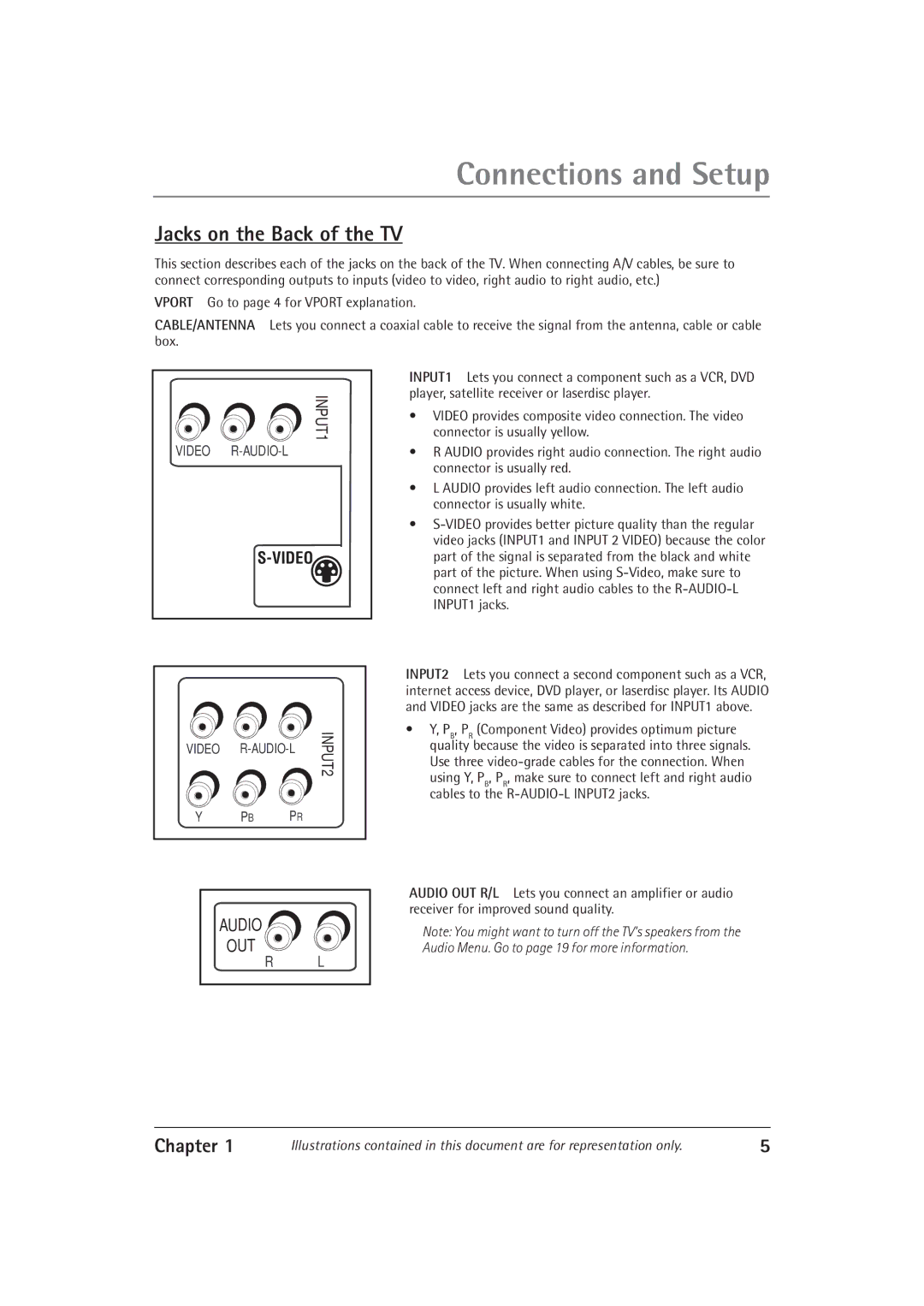
Connections and Setup
Jacks on the Back of the TV
This section describes each of the jacks on the back of the TV. When connecting A/V cables, be sure to connect corresponding outputs to inputs (video to video, right audio to right audio, etc.)
VPORT Go to page 4 for VPORT explanation.
CABLE/ANTENNA Lets you connect a coaxial cable to receive the signal from the antenna, cable or cable box.
INPUT1
VIDEO
S-VIDEO
INPUT1 Lets you connect a component such as a VCR, DVD player, satellite receiver or laserdisc player.
•VIDEO provides composite video connection. The video connector is usually yellow.
•R AUDIO provides right audio connection. The right audio connector is usually red.
•L AUDIO provides left audio connection. The left audio connector is usually white.
•
VIDEO |
| INP |
|
| UT2 |
Y | PB | PR |
AUDIO
OUT
R L
INPUT2 Lets you connect a second component such as a VCR, internet access device, DVD player, or laserdisc player. Its AUDIO and VIDEO jacks are the same as described for INPUT1 above.
•Y, PB, PR (Component Video) provides optimum picture quality because the video is separated into three signals. Use three
using Y, PB, PR, make sure to connect left and right audio cables to the
AUDIO OUT R/L Lets you connect an amplifier or audio receiver for improved sound quality.
Note: You might want to turn off the TV’s speakers from the Audio Menu. Go to page 19 for more information.
Chapter 1 | Illustrations contained in this document are for representation only. | 5 |
